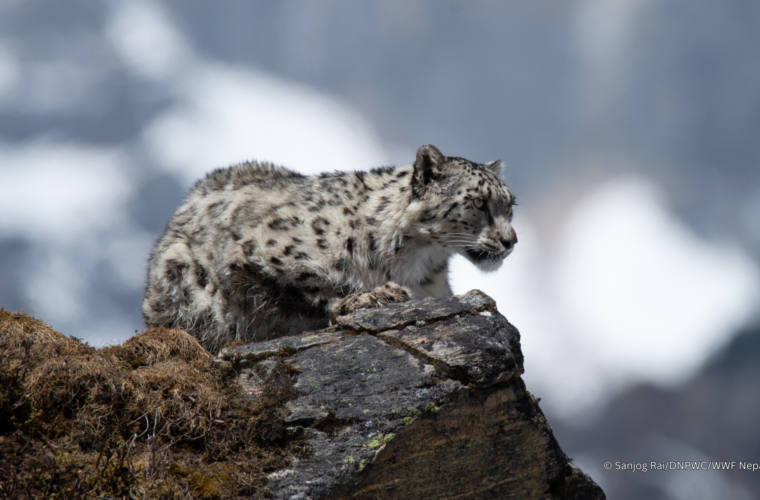Bhishma Raj Ojha, Kathmandu, April 23: The number of snow leopards in Nepal has been found to be 397, according to a survey conducted by the World Wildlife Fund (WWF) Nepal. This number constitutes 10 per cent of the global snow leopard population, it is said.
The snow leopard is found to inhabit in an area of 30,500 square kilometres in the high mountainous region of Nepal. According to the Snow Leopard Trust in the United States, there are currently around 3,020 to 5,390 snow leopards living in two million kilometers area across the world.
Snow leopards are mostly found in 12 countries including Nepal, China, Afghanistan, Bhutan, Kazakhstan, Kyrgyzstan, India, Mongolia, Russia, Pakistan, Tajikistan and Uzbekistan.
In recent times, India, Mongolia and Bhutan, along with Nepal, have been releasing new and official data of snow leopards by using technology, and analyzing research and data.
There are at least 2,000 to 2,500 snow leopards in China, 953 in Mongolia, 718 in India, 397 in Nepal and 134 in Bhutan, according to WWF Nepal’s Mountain Program Manager Sarin Shrestha.
According to him, the data was collected after analyzing and evaluating various data and research with the help of organizations including the WWF. The survey was led by the Department of National Parks and Wildlife Conservation under the Ministry of Forests and Environment and the Department of Forest and Soil Conservation.
Snow leopard expert Shashanka Poudel said that data has been extracted from various studies led by the government, conservation organizations and researchers from 2015 to 2024. He said that this data has been used using advanced technology including camera trap and genetic analysis of samples of the animal’s droppings, data on snow leopard distribution and the snow leopard population density from seven different study areas.
The findings of this analysis underscore the country’s commitment to protecting snow leopards and their sensitive mountain ecosystems.
This assessment was conducted by a technical team led by a senior ecologist of the Department in accordance with the ‘Population Assessment of the World Snow Leopards’ guidelines of the Global Snow Leopard and Ecosystem Protection Program. It included individual researchers and conservation organizations, including the WWF.
Snow leopards found in only 12 countries of the world are considered to be an indicator of a clean and healthy mountain environment.
About 60 per cent of the snow leopard habitat is outside the park and such habitats are being fragmented, adding to the challenge.
Snow leopards are recognized as a vulnerable, flagship species, serving as indicators of healthy mountain ecosystems. However, they face numerous threats, including wildlife crime, retributive killing, and climate change impacts on their habitats. As one of the least studied big cats globally, the need for ongoing research and conservation efforts is paramount.





